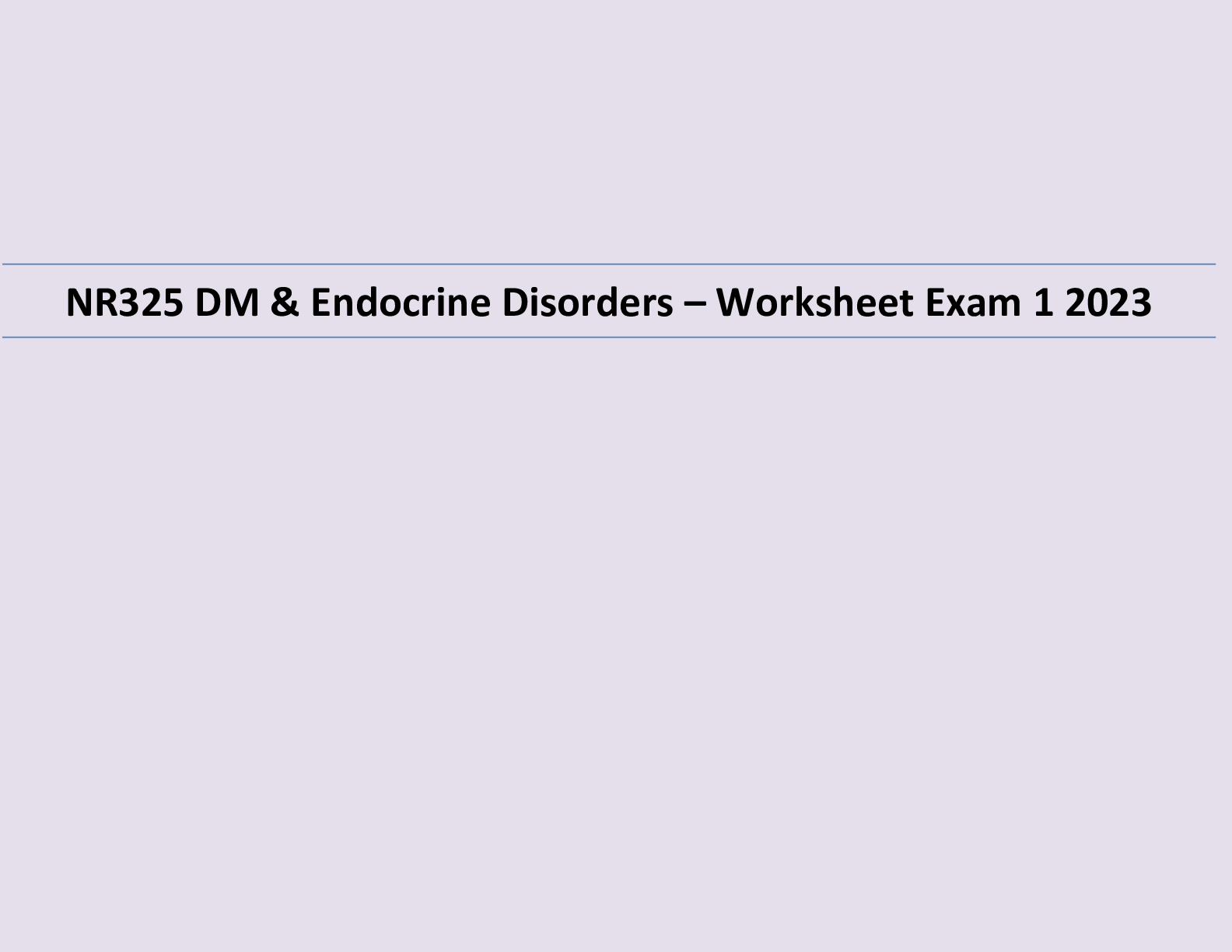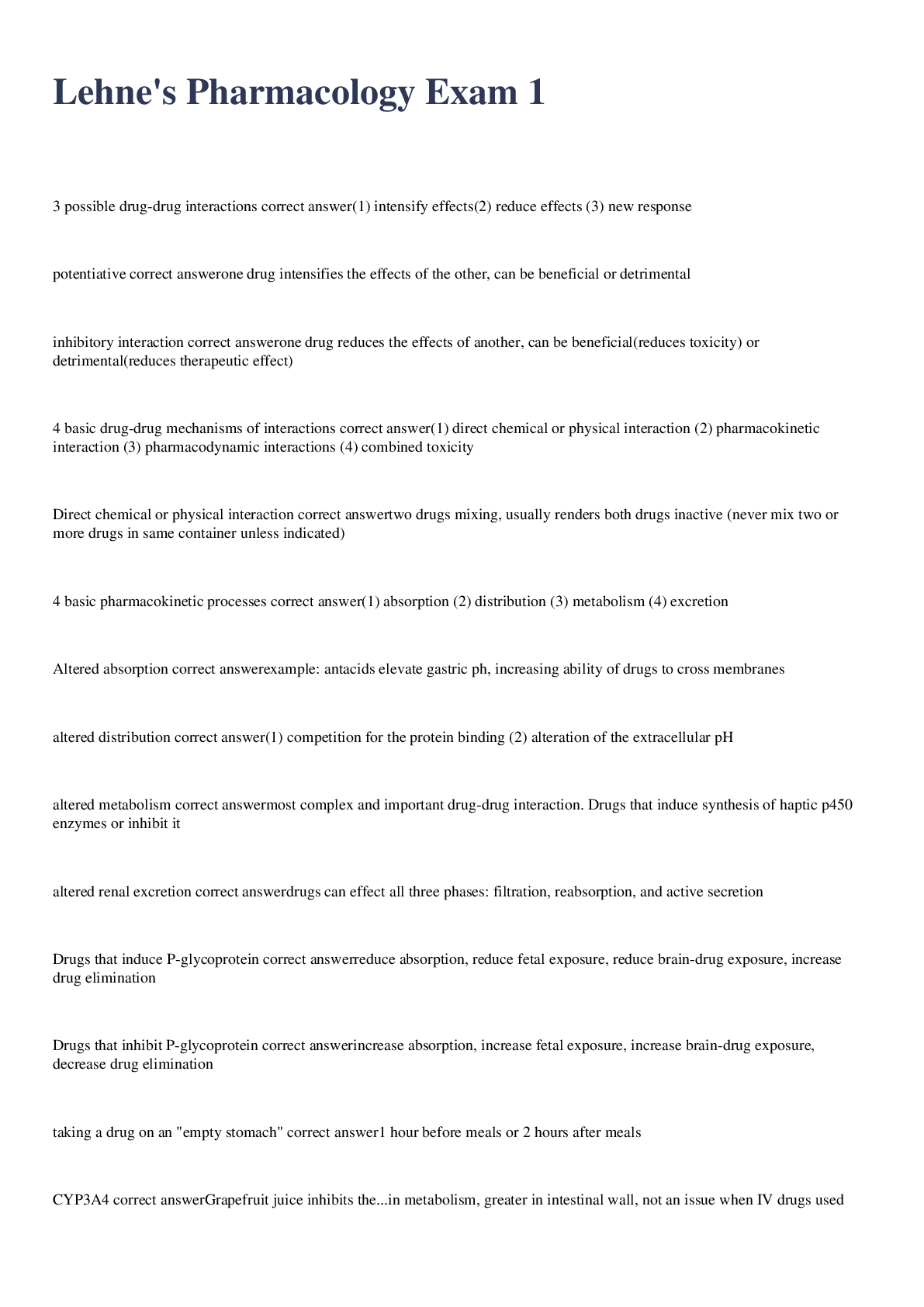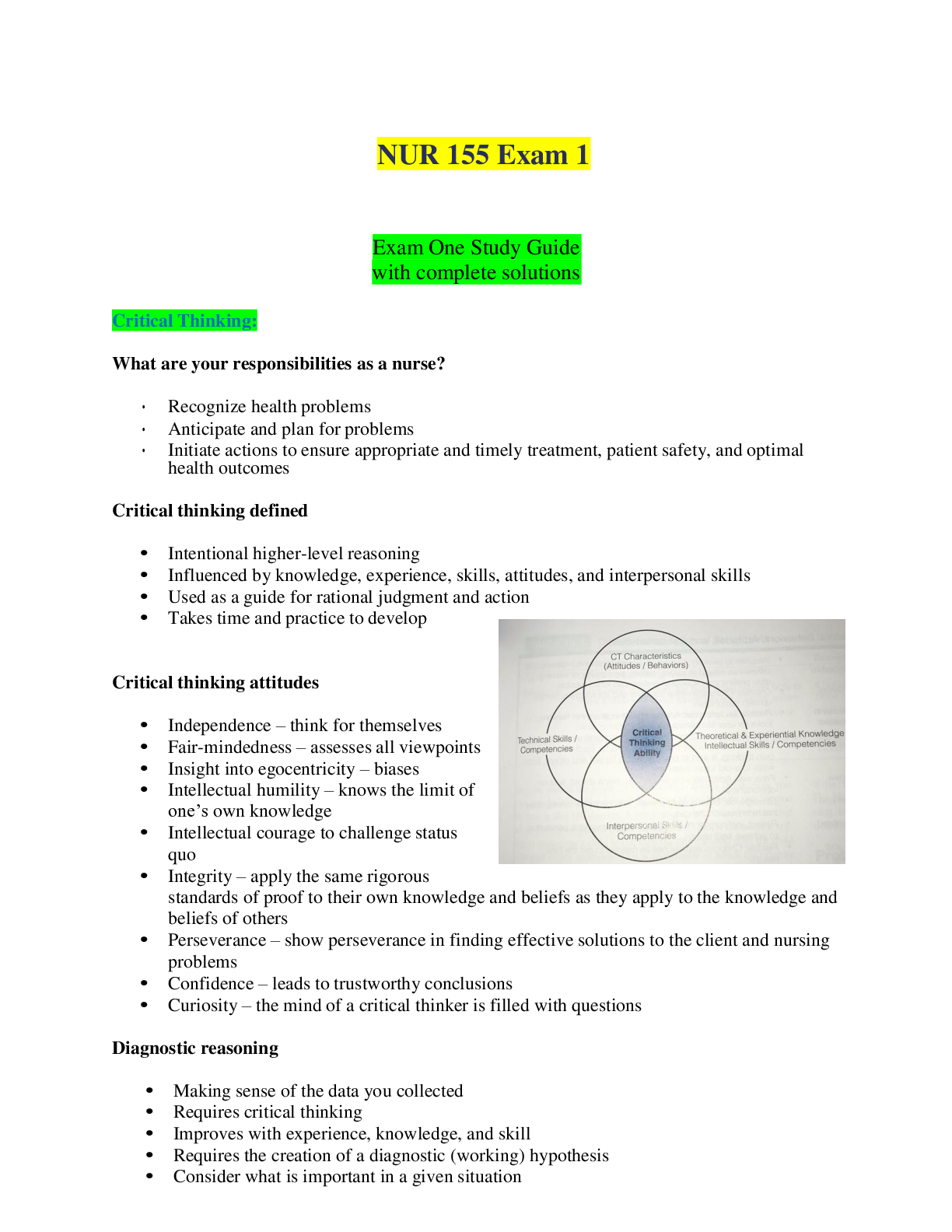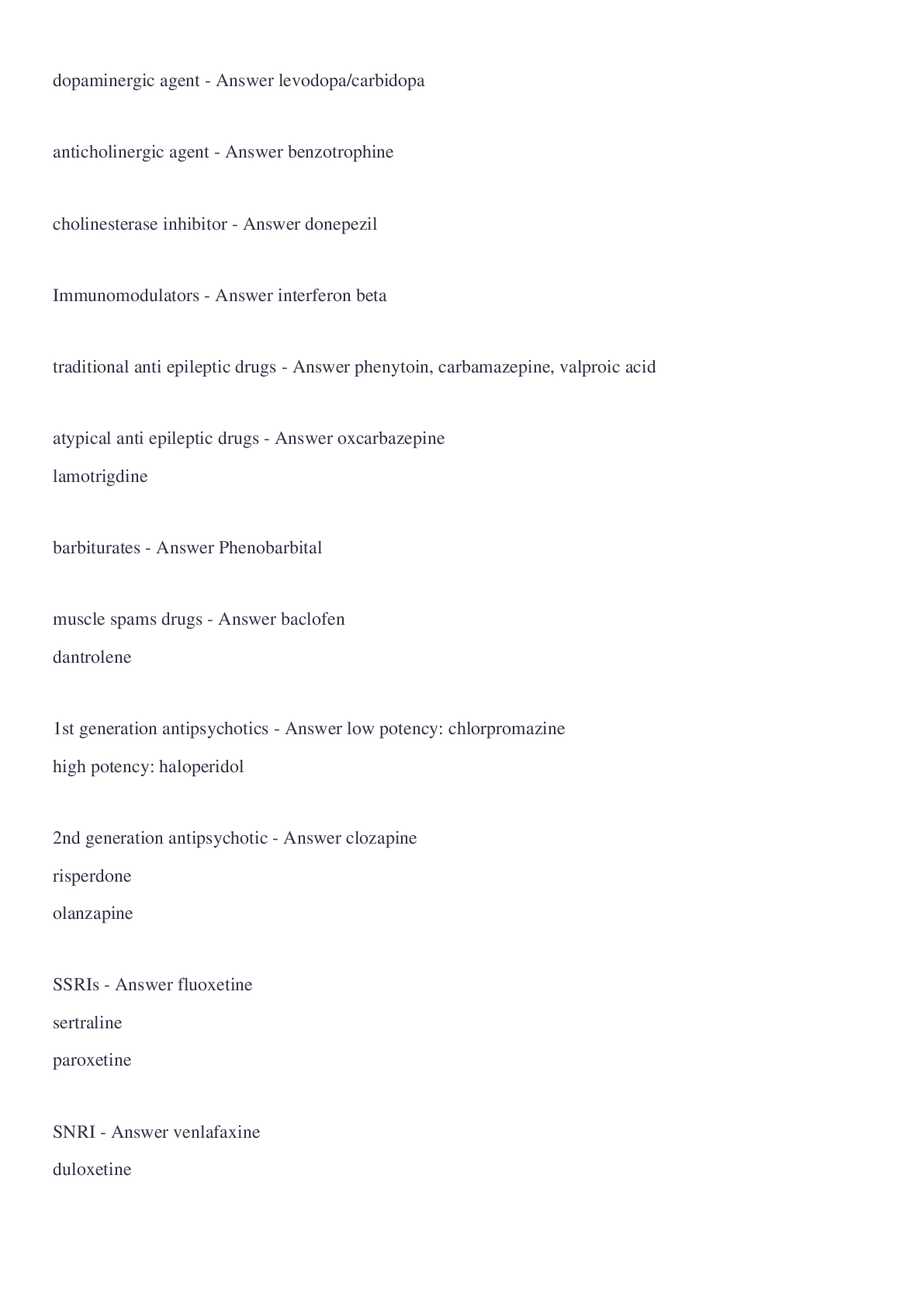Health Care > EXAM > ACUTE RESPIRATORY DISTRESS SYNDROME AND ACUTE RESPIRATORY FAILURE EXAM 1 2023 (All)
ACUTE RESPIRATORY DISTRESS SYNDROME AND ACUTE RESPIRATORY FAILURE EXAM 1 2023
Document Content and Description Below
• WHAT IS ACUTE RESPIRATORY DISTRESS SYNDROME? • ARDS is a form of pulmonary edema that leads to Acute Respiratory Failure (ARF). Also know as Shock, stiff, or white lung, ARDS may follow a direc... t or indirect lung injury. • Can prove fatal within 48 hours if not diagnosed properly and treated early. Mortality rates of 50-70% • Sudden severe respiratory failure refractory to oxygen therapy • ARDS is ARF with : • Hypoxemia that persists even when 100% oxygen is given (refractory hypoxemia, classic s/s) • Decreased pulmonary compliance (lung's ability to stretch and expand) • Dyspnea • Non-cardiac associated bilateral pulmonary edema • Dense pulmonary infiltrates on x-ray (ground-glass appearance) • PATHOPHYZ-WIZ ARDS • Often ARDS occurs in people that have no significant lung disease after sustaining an acute lung injury (ALI) as a result of such things as sepsis, burns, fat emboli, pulmonary contusions, and multiple transfusions. • Regardless of the ALI in ARDS, it triggers a systemic inflammatory response. Main component injured in the lungs is the alveolar-capillary membrane which is permeable only to small molecules (O2 and CO2). When injured the membrane becomes more permeable letting through large molecules such as proteins, fluids, and debris into the alveoli. Lung fluid accumulates and contains proteins. • ALVEOLAR CHANGES ARDS • Changes occur in alveoli and respiratory bronchioles • Surfactant activity is reduced (the stuff that increases lung compliance) because type II pneumocytes (the things that produce surfactant) are damaged and because surfactant is diluted by excess lung fluids, • Alveoli tend to collapse or fill up with fluid. Neither scenario can participate in gas exchange. • Lung fluid and debris continue to collect in lung tissue and interstitium, alveolar spaces, and small airways, causing the lung to stiffen • Lymph channels can also become compressed and blocked causing more fluid to collect • Poorly inflated alveoli still receive blood but cannot oxygenate it causing it to shunt systemically un oxygenated. Leads eventually to hypoxemia and V/Q mismatch • • [Show More]
Last updated: 1 year ago
Preview 1 out of 7 pages
Instant download
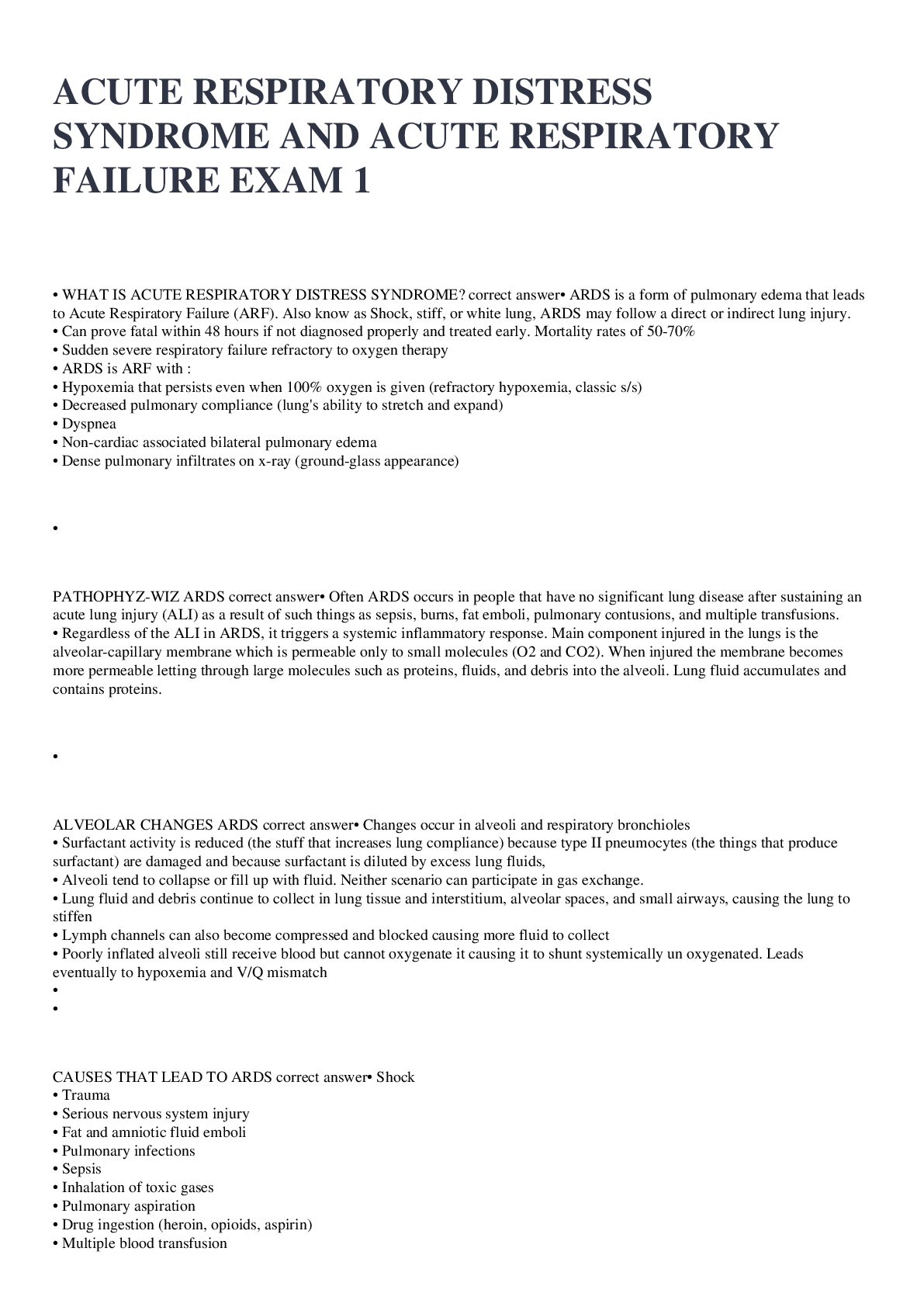
Buy this document to get the full access instantly
Instant Download Access after purchase
Add to cartInstant download
Reviews( 0 )
Document information
Connected school, study & course
About the document
Uploaded On
Jan 10, 2023
Number of pages
7
Written in
Additional information
This document has been written for:
Uploaded
Jan 10, 2023
Downloads
0
Views
37





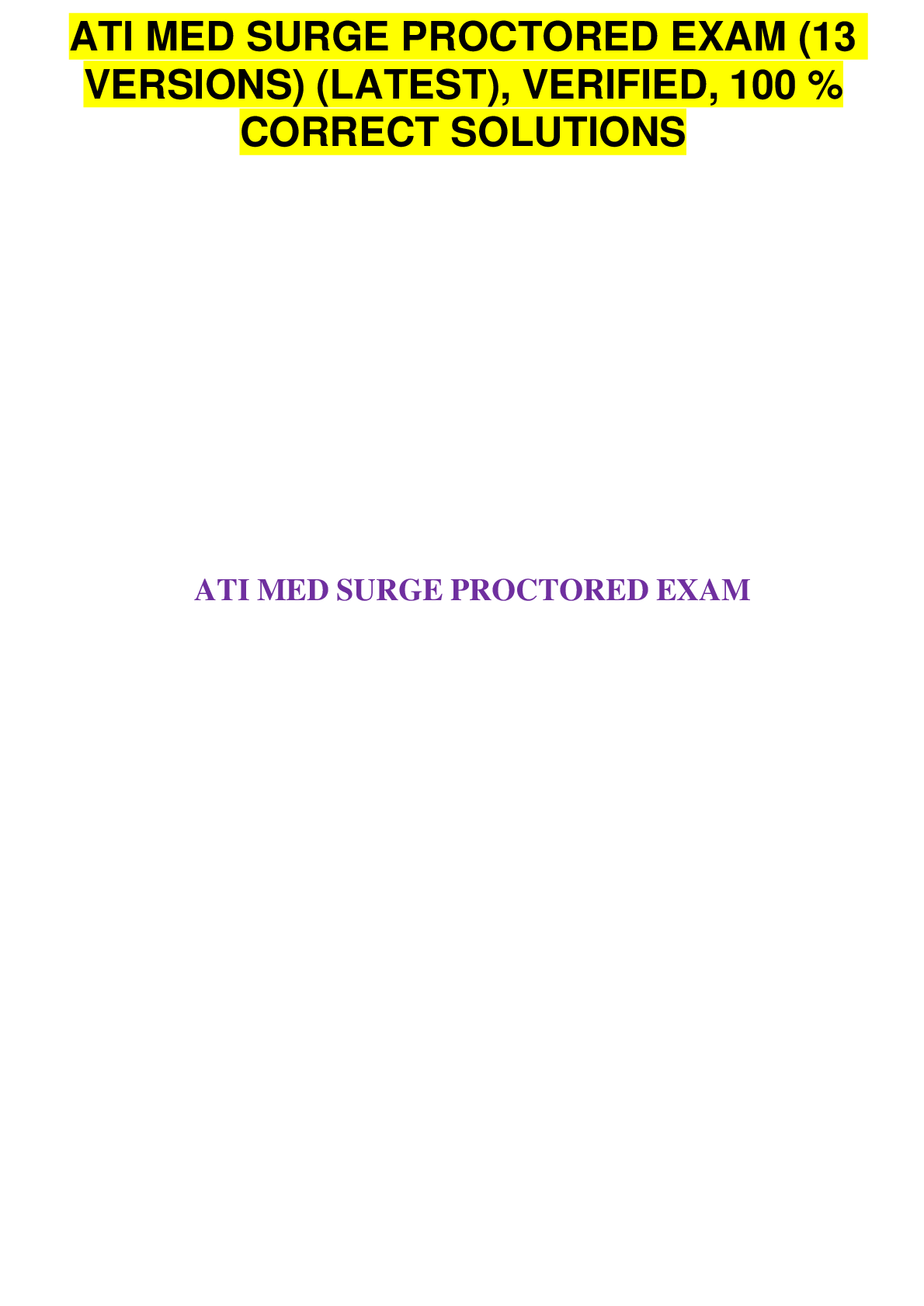

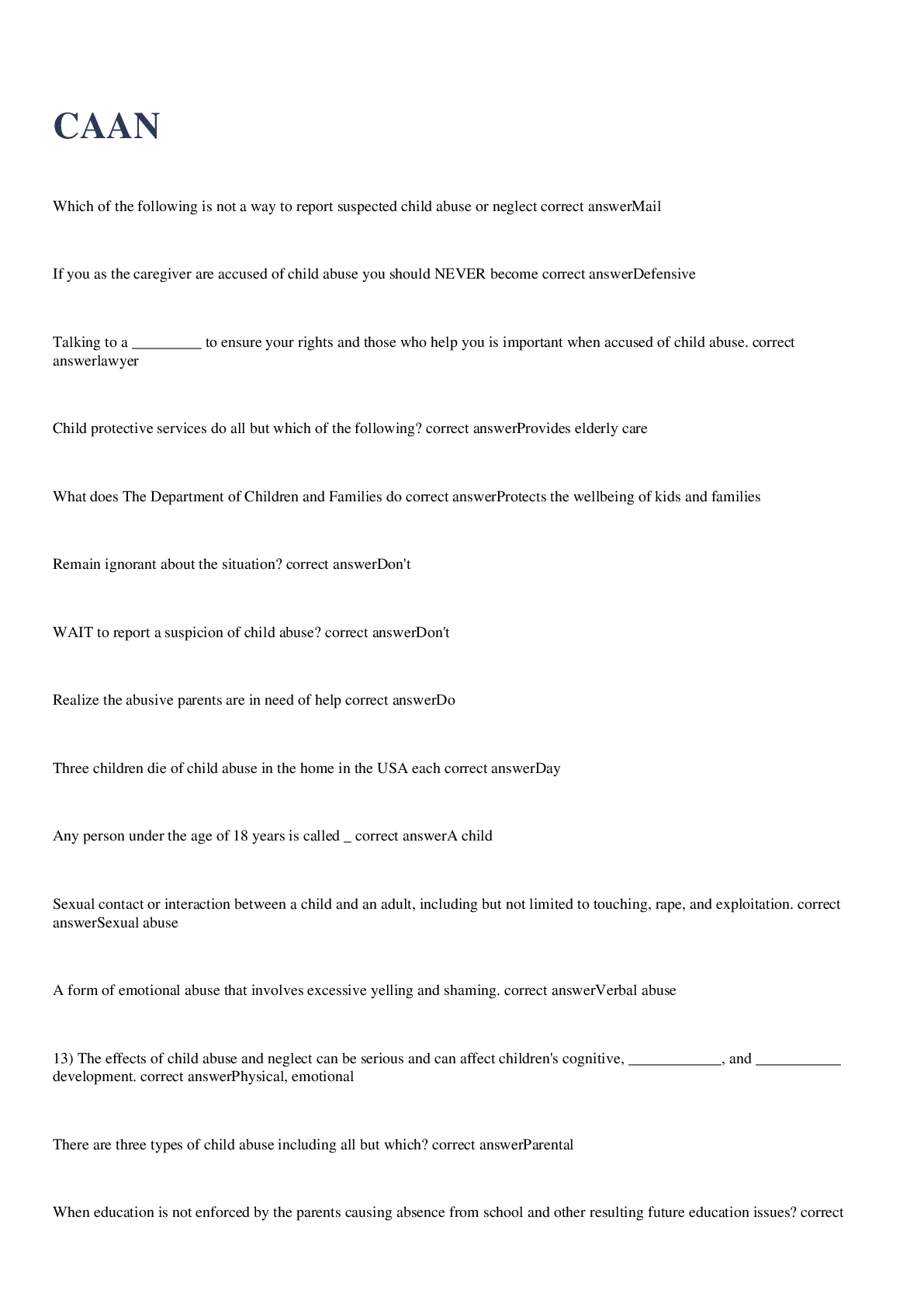



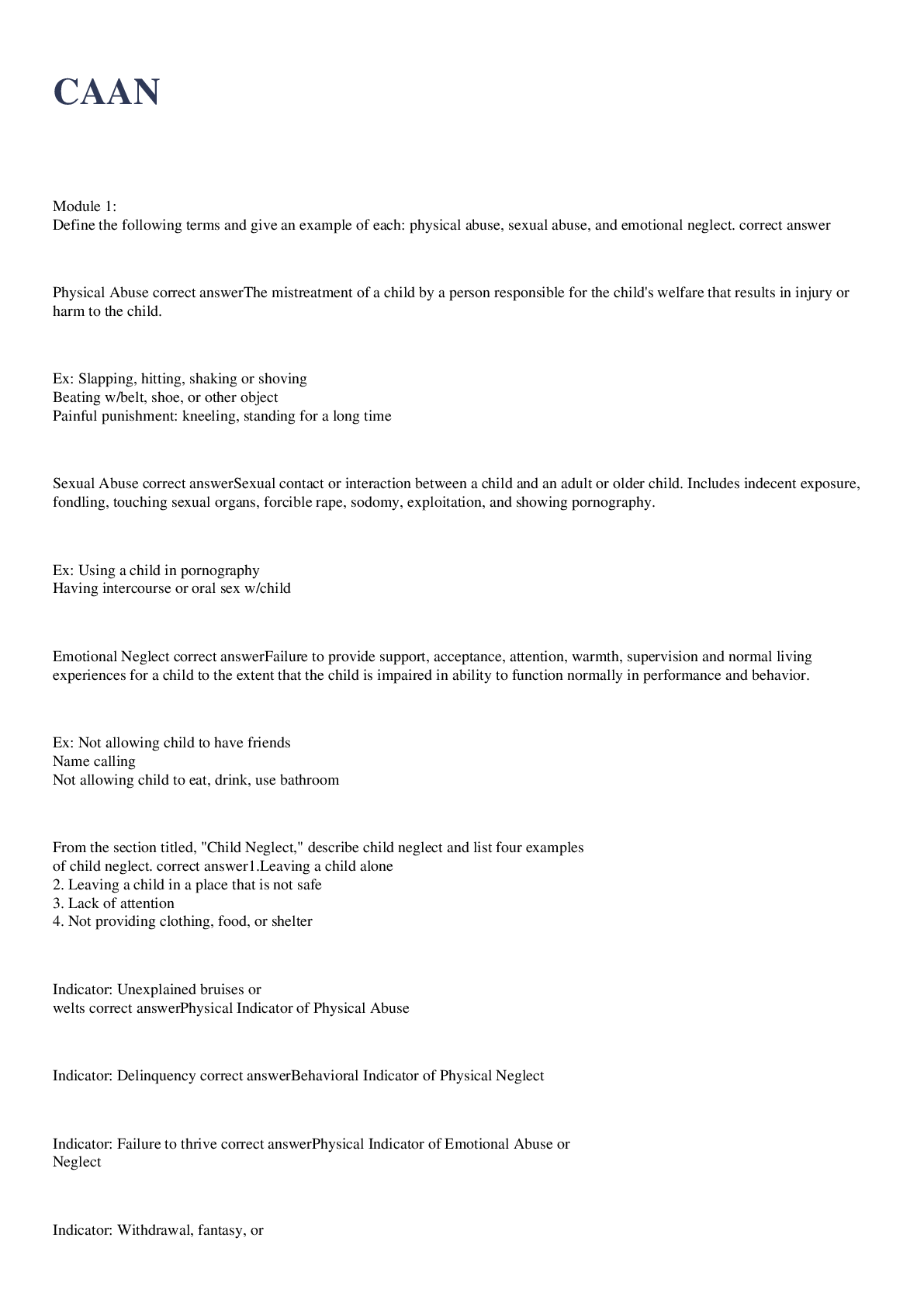

 WITH EXPLANATION.png)
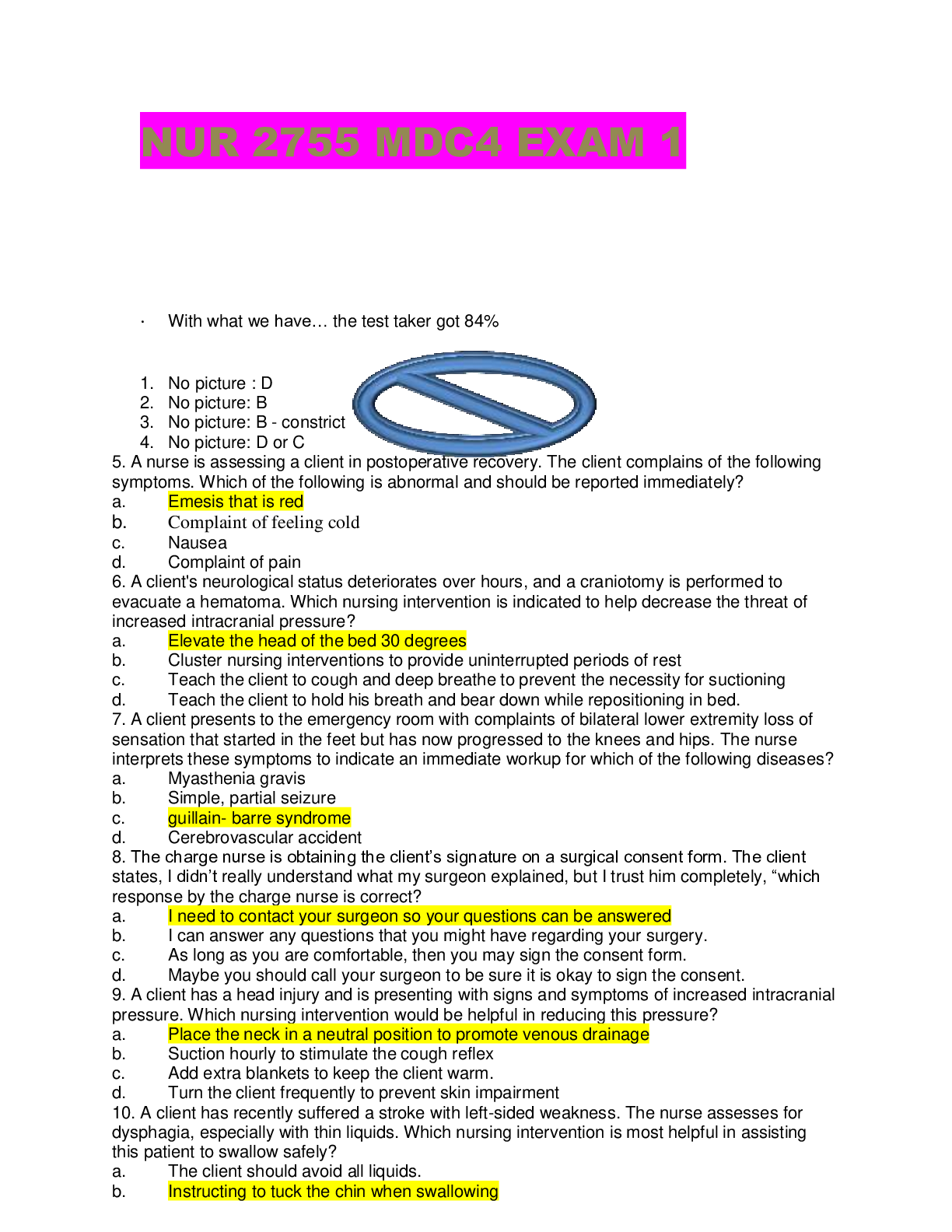
 Latest Questions and Complete Solutions.png)

